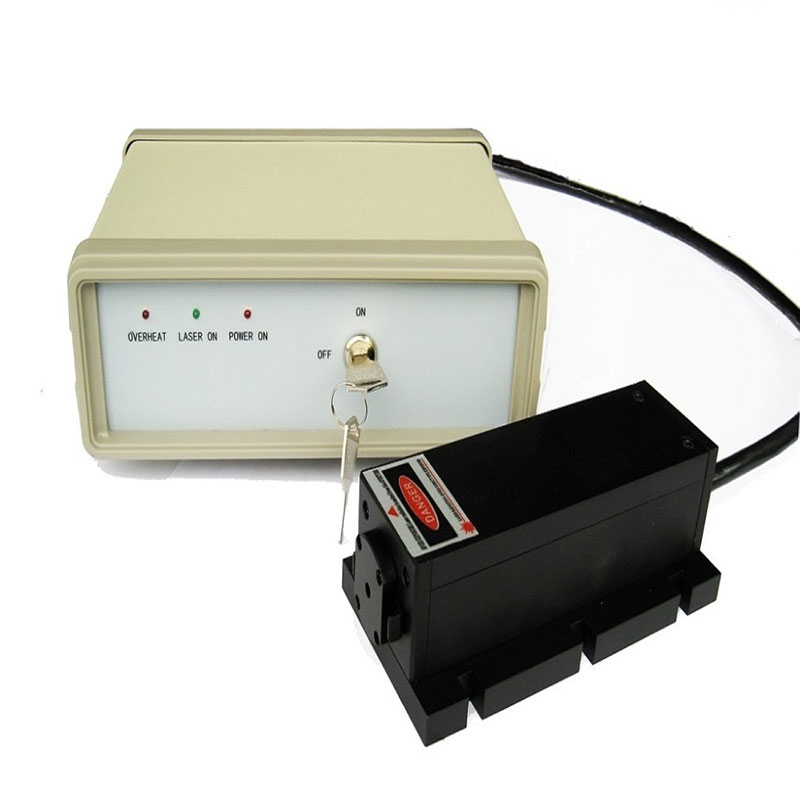
- English
- 简体中文
- Español
- Português
- русский
- Français
- 日本語
- Deutsch
- tiếng Việt
- Italiano
- Nederlands
- ภาษาไทย
- Polski
- 한국어
- Svenska
- magyar
- Malay
- বাংলা ভাষার
- Dansk
- Suomi
- हिन्दी
- Pilipino
- Türkçe
- Gaeilge
- العربية
- Indonesia
- Norsk
- تمل
- český
- ελληνικά
- український
- Javanese
- فارسی
- தமிழ்
- తెలుగు
- नेपाली
- Burmese
- български
- ລາວ
- Latine
- Қазақша
- Euskal
- Azərbaycan
- Slovenský jazyk
- Македонски
- Lietuvos
- Eesti Keel
- Română
- Slovenski
- मराठी
- Srpski језик
Diode Pumped Cw: A Flexible and Efficient Light Source Option!
2025-04-23
Nd-doped crystals and glasses such as Nd:YAG (neodymium:yttrium aluminum garnet) have long been used as laser gain materials. Optically pumped, they can produce output wavelengths close to 1µm, while the excited state lifetime of neodymium supports both continuous wave and pulsed (Q-switched) operation.
In traditional lasers, the output of intense flash lamps and arc lamps is focused into a cylindrical laser crystal rod to form a gain module. This module is then placed inside the laser cavity, which is typically several inches long and bounded by high reflectors and partial reflectors or output couplers.
However, this approach faces several challenges. First, the pump light is not efficient, which is mainly due to the lamp's inefficiency in converting electrical energy into pump light, while generating a lot of useless heat. More critically, these lamps emit broadband radiation in the visible and infrared ranges, resulting in most of the light not being fully absorbed by the laser gain crystals, which in turn exacerbates the heat generation of the pump module. This heat must be dissipated by a water-cooling system for the laser head, and a multi-kilowatt power supply is required.
For many industrial applications, continuous arc lamps have a limited lifespan and need to be replaced every 200 to 600 hours. During replacement, the cavity optics often need to be fine-tuned to maintain a good laser output pattern. This frequent routine maintenance not only increases costs, but can also affect the stability of the laser system. In addition, the optical alignment can drift over time, requiring regular recalibration, even without considering replacement of the lamp itself.
In contrast, Diode Pumped CW significantly eliminates these limitations and disadvantages. Neodymium-doped laser crystals have high absorption at wavelengths of 808 and 880 nm, which match the emission wavelengths of InGaAs semiconductor laser diodes. The laser diode can efficiently convert electrical energy into laser light, which is effectively absorbed by the neodymium-doped crystal, achieving a wall-plug efficiency that is several times higher than that of traditional lamp-pumped lasers.

In addition to high electrical efficiency, Diode Pumped CW also brings other significant advantages. Due to the low output power, these lasers generate relatively little heat, reducing cooling requirements. In addition, they are powered by low voltage power supplies, compatible with single-phase (110/220V) lines or low voltage utilities in some laser machine tools.
In addition, due to the compact size of the semiconductor diodes, the overall size of the laser head can be significantly reduced. For OEMs and industrial users, the long life of the diodes further reduces maintenance downtime. In fact, with the continuous improvement of diode reliability in diode-pumped solid-state lasers, these lasers have achieved many years of trouble-free operation.
In terms of the introduction of laser crystals, there are several basic approaches to Diode Pumped CW, including end pumping and side pumping. End pumped lasers provide high performance and stability of high-quality output beams in the power range down to tens of watts, while side pumped lasers focus on providing up to several kilowatts of raw power, although their beam quality is compromised.
Since the introduction of Diode Pumped CW, numerous laser crystal geometries have been studied with varying degrees of commercial success. Among them, cylindrical rods, plates and thin disk crystals are the most important. Depending on the power and mode requirements, plate and rod laser crystals can be designed as either end-pumped or side-pumped, while disk crystals can only be end-pumped. Generally, rod crystals dominate low/medium power and high mode quality applications, while plate and disk crystals are often used in high-power lasers.


